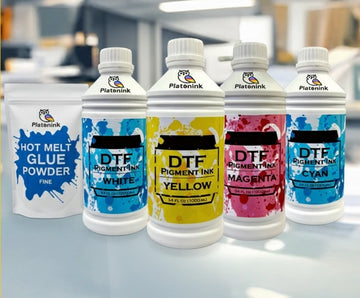You're not the only one who has spent time honing a DTF design just to have it fade after a few washes. One of the most annoying problems for both customers and authors is the fading of DTF prints. The good news, though? It is almost always preventable.
Understanding why DTF prints fade and how to prevent it is crucial for maintaining outstanding results, whether you're running a print on demand business or pressing your own shirts for events.
1. Poor Curing = Weak Prints
Proper DTF print curing is crucial. The glue won't adhere to the fabric well if your transfers aren't cured for the proper length of time and at the proper temperature.
Fix:
- Use a heat press rather than a standard iron.
- Pay attention to the recommended curing temperatures, which are often in the range of 315°F to 335°F.
- Put even, hard pressure on it.
Ensure that your curing system is accurate and consistent. Investing in a good heat press pays off.
2. Washing Too Soon or Too Harshly
One of the most common causes of DTF prints fading? Washing garments before the print has had enough time to set.
best way to wash DTF shirts or DTF wash care tips:
- Wait 24 to 48 hours before the first wash.
- From the inside out, wash with cold water.
- Avoid using bleach and harsh detergents.
- Use low heat tumble drying or let it air dry.
Proper wash care instructions can dramatically improve DTF transfer durability.
3. Skipping the Pre Press Step
Skipping pre pressing might seem like a time saver, but it’s a big reason why DTF prints peel or fade. The fabric's retained moisture hinders the adhesive's ability to adhere correctly.
Solution:
- Pre press your blank garment for 5 to 7 seconds at 280°F to remove moisture and flatten fibers.
This small step makes a big difference in print longevity.
4. Using Low Quality Transfers or Ink
Not all DTF supplies are created equal. Cheap inks or poorly made films break down faster in the wash.
DTF maintenance guide tip:
- Use trusted sources like Bostonian DTF for high quality, professionally made transfers.
- Avoid old or expired inks.
High quality materials equal high quality results that last.
5. Incorrect Heat Press Settings
Even if you’re using good transfers, the wrong heat settings can still cause dtf print quality issues. Not enough heat = under cured. Too much = scorched adhesive or ink.
Prevent DTF print fading:
- Confirm your heat press settings with a temperature gun.
- Use medium to firm pressure.
- Don’t guess, test a sample shirt before large runs.
Dialing in your dtf heat press is one of the most effective ways to extend how long DTF prints last.
6. Fabric Type Matters
DTF transfers work on many fabrics, but certain types require more care. Stretchy materials or blends may not hold prints as long as 100% cotton.
How to fix faded DTF prints:
- Choose compatible garments.
- Always test on new materials.
Match your prints to the right fabric to get better longevity.
7. Lack of Post Press Care
Some printers skip the post press (second press) thinking it’s optional. But this step helps seal the ink into the fibers, improving durability.
Best practice:
- Cover with parchment paper after peeling, then press again for 5 to 10 seconds.
This "final lock in" makes all the difference in how the print survives over time.
Conclusion
Your prints deserve to last. From curing and washing to the heat press and fabric, every step counts. The key is consistency and care.
At Bostonian DTF, we’re here to help you keep every print looking sharp – not just on day one, but for months of wear.
DTF printing isn’t just about bold designs. Making a lasting impression is the goal.
Frequently Asked Questions
1. How long do DTF prints last?
When properly applied and maintained, DTF prints can withstand more than fifty washings without seeing any fading, particularly when using cold water and mild washing cycles.
2. What causes DTF prints to fade after just a few washes?
Common causes include under curing, washing too soon, harsh detergents, and skipping the post press step. Always follow the full DTF printing process.
3. Can you fix faded DTF prints?
Some faded prints can be improved by a second press with a cover sheet, but once the ink has lifted or cracked, it’s often irreversible.
4. What’s the best way to prevent DTF fading?
Use high quality transfers, follow proper curing temperatures, avoid early washing, and educate customers on washing inside out in cold water.
5. Does fabric choice affect DTF print durability?
Indeed! Cotton and other natural fibers are generally better at retaining DTF transfers than synthetic mixtures. Before printing in large quantities, always test new fabrics.


















